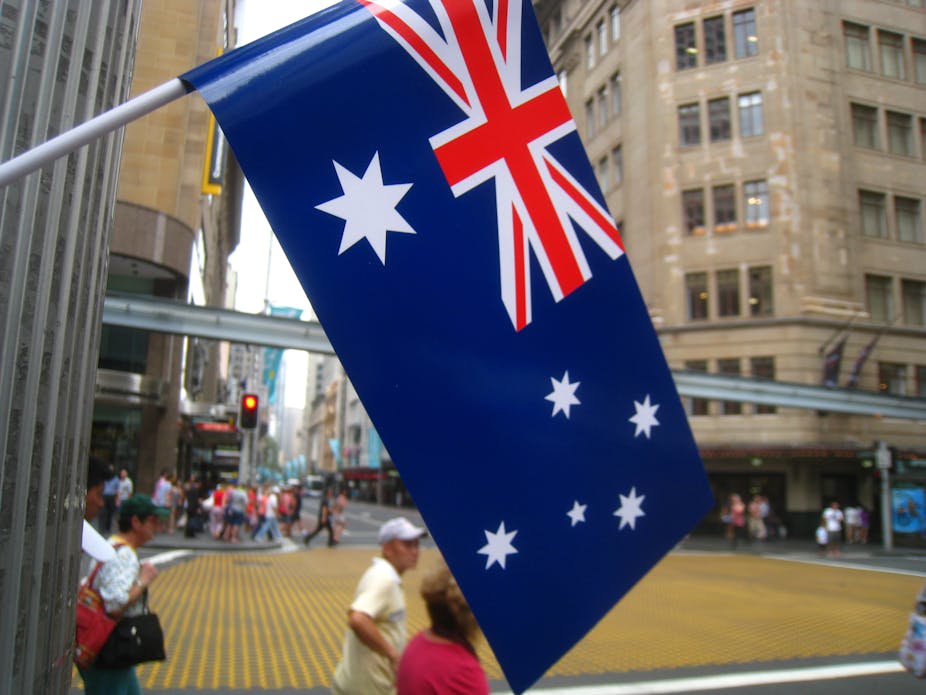Anthropological images of alien peoples have long been a staple in the collections of Australia’s institutions of cultural memory. From the invention of photography – and indeed before, through the hands of artists – Northern European collectors have been afoot amongst the peoples of the continent, documenting through the lens the passing moment, and too often, the moment of passing.
In keeping with this tradition the NSW State Library has launched a photographic exhibition by Louise Whelan titled Home: photographs of ethnic communities that documents the multicultural diversity of the state today. As part of that project the Library will present a panel discussion tonight entitled “Multiculturalism: what are we afraid of?”
Whether consciously or not this event provides a curious insight into the meaning of multiculturalism in the eyes of “old Australia”, those who have for years been on the one hand the collectors and on the other hand the authors, of our collective memory.
The original panel supporting the photographer is solely comprised of old-time (and iconic) Australians, all well-meaning – but none an immigrant from anywhere south of north.
A flurry of commentary on Facebook drew this problem to the attention of the Library and Congolese migrant and community worker Isaac Kisimba’s name and biography appeared on the list of panellists today. This is not to denigrate the powerful and attractive images created by photographer Louise Whelan which join the work of documentarists such as Michel Lawrence’s All of Us, Emmanuel Santos and Making Multicultural Australia.
Multiculturalism under Howard

In the wash of John Howard’s victory of 1996, I was invited by my bemused hosts at the Australian Studies Centre at the University of Indonesia, to speak at the Australia Indonesia annual lecture in Jakarta. The topic I was given – “Is Australia a racist society?” – fascinated the Indonesians.
At the time, the Suharto period was already doomed, and within a year the streets of the city would be littered with the burnt-out refuse of pillaged Chinese stores, slaughtered bodies, and desecrated temples in Glodok.
At the conclusion of my talk, copies of which DFAT would order pulped (though there’s a link to the paper here) my Indonesian interlocutor, Deputy Director at the Centre for Strategic and International Studies (CSIS) and an advisor to Megawati Sukarnoputri the future President, reflected on its implications.
He said that initially he had not known what he might contribute, but then he realised that Australia and Indonesia, as multicultural societies, shared a common challenge. Each had a rich though bloody history, marked by racial antagonisms and colonial scarification. Now they were each poised to write the script for their futures.
But who would be allowed to sit at the table? Who would be authorised to participate in the fashioning of the narrative that the nation would be asked to act out in the years to come? For the CSIS the place of Chinese Indonesians was critical. For Australia it was, he intimated, a less vast but no less onerous coming-to-grips with its White past and rainbow future.
Changing the script
One of the surprises of the election campaign in 2013 was Tony Abbott’s re-commitment to multiculturalism, once he realised that “they [foreigners] come to join us not to change us”. That formulation would have worried my Indonesian friend, for it sounds like the script has already been written and completed. Any newcomers need to read it, learn it and perform their assigned parts.
The Government seems to be moving ahead with abandoning protection against racial sledging in public – yet it has re-appointed the Australian Multicultural Council for another six months.
The Council membership, however, will change dramatically as the Government (under Concetta Fierravanti-Wells as Parliamentary Secretary to Minister Kevin Andrews) works out which on-side ethnics it will recruit to replace them. Already the PM’s office has reportedly blocked Malcolm Turnbull from ensuring the current very effective chair of SBS, Joe Skrzynski, is reappointed.
Skrzynski is a man who proved just how potent brains and style can be in building support for diversity and contributing to the critique of White Australia. His advocacy of cultural pluralism, in his recognition of a human rights-based immigration nation, proved his undoing in the eyes of the conservatives in government. They apparently dislike advocacy, human rights, and the idea of an evolving and ever-changing multiracial Australia.
So what do we get when we put the entrails of all these chickens together?
We are now in what might almost be thought of as a post-multicultural era, when the sensitivities of minorities and the critical awareness of racial hierarchies of power are apparently no longer of importance. Indeed racialised world-views are taken for granted, while White world views sit at the top of the pile where they can surveil and correct the behaviour of the dusky others.
Mick Young, once Labor’s immigration minister, said that multiculturalism and human rights in Australia was like driving a truck uphill: just to stay in the same place you need to have your foot on the gas; take it off and the whole edifice slides down the slope.

